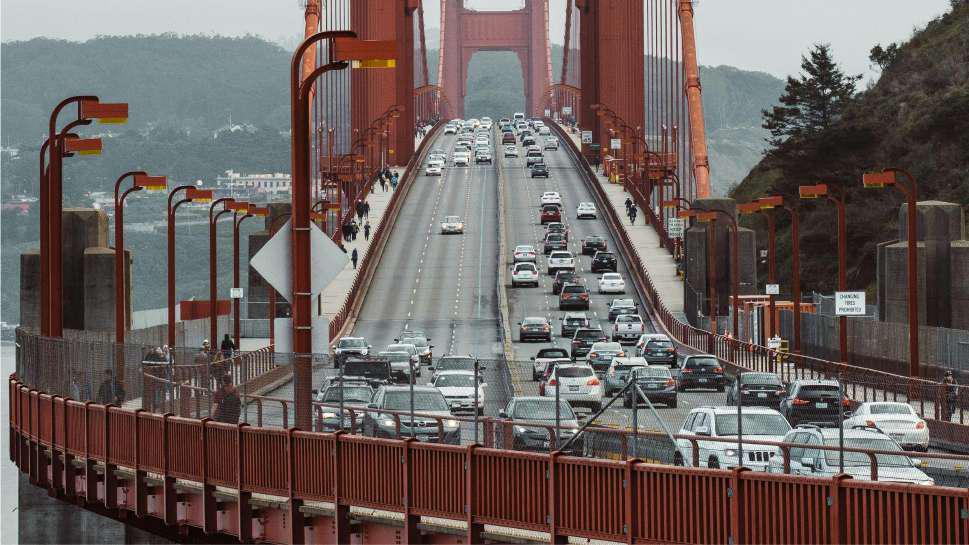Finance expert John Williams has recently analyzed California’s new tax policies, which include the introduction of a wealth tax targeting affluent residents and an exit tax for those relocating out of the state.
These measures aim to address California’s significant budget deficit, which has reached $68 billion. The state’s approach to increasing revenue involves direct taxation on the assets of the wealthy, with additional scrutiny on asset reporting.
Addressing the Budget Deficit Through Taxation

John Williams highlights California’s substantial budget deficit of $68 billion. The state’s response involves implementing a wealth tax, which includes the annual taxation of the rich based on their assets.
This initiative is part of a broader strategy to increase state revenue and involves the use of attorneys to investigate and potentially litigate against affluent individuals for underreporting their wealth.
The California Exit Tax Explained

The proposed wealth tax in California introduces a potential exit tax for individuals and businesses that decide to move out of the state.
Although not explicitly labeled as an exit tax, the legislation could impose a significant financial burden on those choosing to relocate to areas with lower tax rates. This move is seen as a way to retain tax contributions from wealthy residents.
Tax Rates and Implications for High Net Worth Individuals

Starting in 2024, the proposed tax rate would be 1.5% for net worths exceeding $1 billion. From 2026, the rate would adjust to 1% for net worths over $50 million.
This tax aims to apply to full-time, part-year, and temporary residents of California, with specific provisions for apportionment. The exit tax mechanism is designed to allow taxation for several years after a taxpayer leaves California, classifying them as a “Wealth Tax Resident.”
Exemptions and Scope of the Wealth Tax

The proposed wealth tax is structured to not affect California residents with a net worth below $50 million.
Only those already subject to the wealth tax would be required to pay the exit tax upon relocating outside the state. This policy is part of a legislative effort to ensure fair taxation while considering the impact on various residents’ financial situations.
Legal and Constitutional Concerns

Critics have raised concerns about the legality of the proposed wealth and exit taxes, debating their constitutionality.
There are questions regarding the violation of the Due Process or Commerce Clauses of the Constitution, specifically whether taxing individuals no longer residing in California or discriminating against interstate commerce is lawful. These legal challenges highlight the complex nature of implementing such taxes.
Real-world Consequences for California Residents

Williams discusses the real-life impacts of these tax policies, focusing on the challenges faced by individuals heavily invested in California’s real estate market.
The declining property values, combined with increasing taxes, pose significant financial risks. This scenario underscores the broader economic implications of the state’s tax policies on its residents.
Potential Spread to Other States

Williams warns that California’s tax measures could serve as a model for other states facing financial difficulties.
There’s a concern that cities like Philadelphia, Boston, Atlanta, and Chicago might adopt similar tax policies. This speculation suggests a possible trend of increased taxation targeting the wealthy across different states.
Public Outcry and Constitutional Debates

The public has voiced strong opinions against the exit tax, with many claiming it violates constitutional rights.
Comments such as “Taxing people for leaving CA? That is unconstitutional,” and “How is this even legal???” reflect widespread dissatisfaction and concern over the restrictions on freedom of movement imposed by these tax policies.
Overview of California’s Wealth Tax Legislation

California’s proposed wealth tax casts a wide net, targeting not just full-time residents but also part-time inhabitants and those who have recently moved away. The tax’s reach extends to a proportion of an individual’s wealth, calculated based on the days spent in California each year.
Even after leaving the state, former residents may find themselves obligated to pay the wealth tax, emphasizing the state’s intent to secure revenue from a broad base of wealth holders. This tax encompasses a vast array of assets, from shares in partnerships and private-equity interests to artwork and financial assets located abroad.
Financial Implications of the Wealth Tax

The wealth tax is estimated to raise approximately $21.6 billion annually, assuming no significant exodus of wealthy individuals from the state.
However, this revenue may still fall short of covering California’s budget deficit and increasing Medicaid costs.
California’s Shrinking Population

The shrinking population in California would have an impact on the success of the wealth tax. In 2023, California experienced a significant population decrease, with tens of thousands of residents leaving the state.
According to estimates by the U.S. Census Bureau, the state’s population declined by about 75,400 over 12 months, leading to a new total of over 38.96 million as of July 1.
The Departure of Wealthy Californians

A notable portion of those leaving California includes some of the state’s wealthiest individuals.
This exodus poses a risk to California’s tax revenue, as 40% of the state’s tax income is derived from earners in the top 1%. The migration of these high earners could significantly impact the state’s financial stability.
Migration Figures Highlight Concerns

Jared Walczak, Tax Foundation Vice President of State Projects, highlighted the issue in an interview with FOX Business, describing California’s migration numbers as “even more stark” than the population figures.
The movement of these taxpayers is alarming for the state’s economy, as it faces challenges in maintaining its tax revenue levels.
Net Loss in Tax Returns

Fox Business reports that according to IRS migration data, California saw over 399,400 tax returns leave the state, with only 241,200 coming in during 2020-2021.
This resulted in a net loss of approximately 158,200 returns. For individuals, the net loss exceeded 331,700 people within the same timeframe, indicating a significant outflow of residents.
Financial Strain on California

California’s economic challenges are highlighted by its reliance on a small percentage of high earners for a substantial portion of its tax revenue.
The state’s budget is uniquely susceptible to fluctuations in the stock market and the economic decisions of the wealthiest Californians. As these individuals begin to leave the state, the potential for a significant reduction in tax revenue grows, posing a risk to the stability and sustainability of public funding and services.
Wealthy Residents Moving Out

The state has observed a decline in tax returns from high earners, with over 27,300 fewer returns reporting an adjusted gross income of at least $200,000 between 2020 and 2021.
This trend is concerning for California, which has long relied on the contributions of its wealthiest residents to support its budget.
Challenges in Retaining Population

California’s challenges are multifaceted, including high living costs, the housing market, and the rise of remote work, as reported by the Los Angeles Times.
These factors, combined with the state’s high taxes, are prompting residents, including wealthy ones, to relocate.
A Governor’s Confidence Amid Challenges

In the face of a dwindling population and a looming budget deficit, Governor Gavin Newsom remains optimistic about California’s future.
During an interview on “Hannity,” Newsom provided insight into the recent population decrease and the state’s economic struggles when compared to Florida. He emphasized an interesting statistic to counter concerns: “Per capita, more Floridians move to California than California is moving to Florida.”
Economic Implications of Population Decline

The decline in California’s population and the exit of high net worth individuals are affecting the state’s economic framework.
These shifts threaten the long-term funding of California’s programs, which depend heavily on continued population growth and high earnings.
Addressing the Budget Deficit

To address its $68 billion budget deficit, California may need to utilize its $24 billion in reserves and consider reducing spending in certain areas, including Proposition 98 spending.
These measures are part of the potential solutions being evaluated to manage the state’s financial challenges.
Broader Trends of Population Decline

While California’s situation is notable, it is not unique.
The populations of seven other states also declined in 2023, reflecting broader demographic trends that various states are navigating in the United States.
National Population Growth

Despite the challenges faced by California and other states, the United States as a whole continues to grow.
The national population reached 334.9 million in 2023, growing by 1.6 million people over 12 months. This growth underscores the dynamic nature of the country’s demographic landscape.
Future Concerns and Fiscal Sustainability

The introduction of the wealth and exit taxes in California raises questions about the state’s fiscal sustainability and its impact on resident taxpayers, including those not directly affected by the wealth tax.
There’s a growing concern that, over time, the financial burden may extend beyond the wealthy, potentially affecting the middle class and altering the state’s economic landscape.
